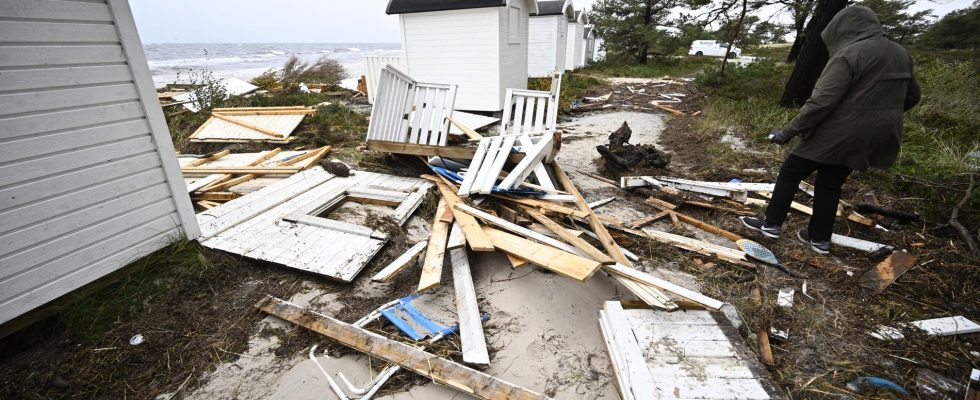Save the article
Hundreds of trees in Scania fell during the storm Babet and the water levels were the highest since the record year 2017. The strong easterly winds distinguished the storm, according to SMHI.
– It is similar to the New Year’s storm in 1904, says meteorologist Viktor Bergman.
Storm Babet culminated last night over southern Sweden. It was the most windy outside of Hanö on the Blekinge coast, where hurricane gusts of just over 33 meters per second were measured at midnight and a second time at two o’clock on the night of Saturday.
The second highest wind strength of 27 meters per second was recorded on the Väderöarna in Bohuslän, followed by Utklippan off the Blekinge coast with 26 and Skillinge in south-eastern Scania which also measured 26.
Overland, the strongest wind force, 24 meters per second, was measured in Hörby in the middle of Scania.
Unaccustomed to the east wind
It is not entirely unusual for such strong winds in autumn, according to meteorologist Viktor Bergman at SMHI. But what stood out about Babet was the wind direction.
– It is unusual for it to be so windy with the east wind. It is similar to the New Year’s storm of 1904, when the situation was similar with strong easterly winds but the consequences were worse. Hanö and Utklippan registered the full hurricane; it was really, really windy that time, he says.
The exact wind direction may have contributed to so many trees falling victim to Babet.
– Over 300 trees have been felled across roads in Skåne as far as I understand from the Swedish Transport Administration. The trees are used to winds from another direction, says Jörgen Öberg, oceanographer at SMHI.
Record in Simrishamn
The high water levels on the south coast of Skåne last night also make Babet stand out.
– These are the highest water levels since 2017, when several records were broken, says Jörgen Öberg.
The highest water level was at 02:00 on the night of Saturday with 135 centimeters above normal at Skanör. In Simrishamn, a new record was broken with 126 centimeters; four centimeters higher than the old record from January 2017.
Several factors resulted in the high water levels.
– A strong easterly wind pushes the water to the west, which stops against the Danish and German Baltic coast and does not come any further. It is made worse by the serious low pressures last week that moved water in from the West Coast and the Belt and filled the Baltic Sea basin to levels of half a meter above normal, Jörgen Öberg explains.
Nevertheless, Sweden got away easily.
– It has been worse in Denmark and Germany, where Denmark had water levels of over two meters above normal in some places, and Germany over 195 centimetres.
THE FACTS The New Year’s storm of 1904
The New Year’s storm of 1904/1905 is considered to have been as severe for south-eastern Scania as the most talked about storm of the century, Christmas 1902.
A low pressure between South Norway and Jutland moved southeast and rapidly intensified on December 30, 1904. The wind overturned from strong westerlies with a temperature of +5 to northeasterly winds of storm or hurricane force and heavy snowfall. The full hurricane was measured at Hanö and Utklippan.
At the same time, sea water levels rose extremely and caused floods with severe damage to Österlen. In Ystad, the sea water level was 169 centimeters above the normal level, the highest that has been measured so far.
Source: SMHI
Read more
